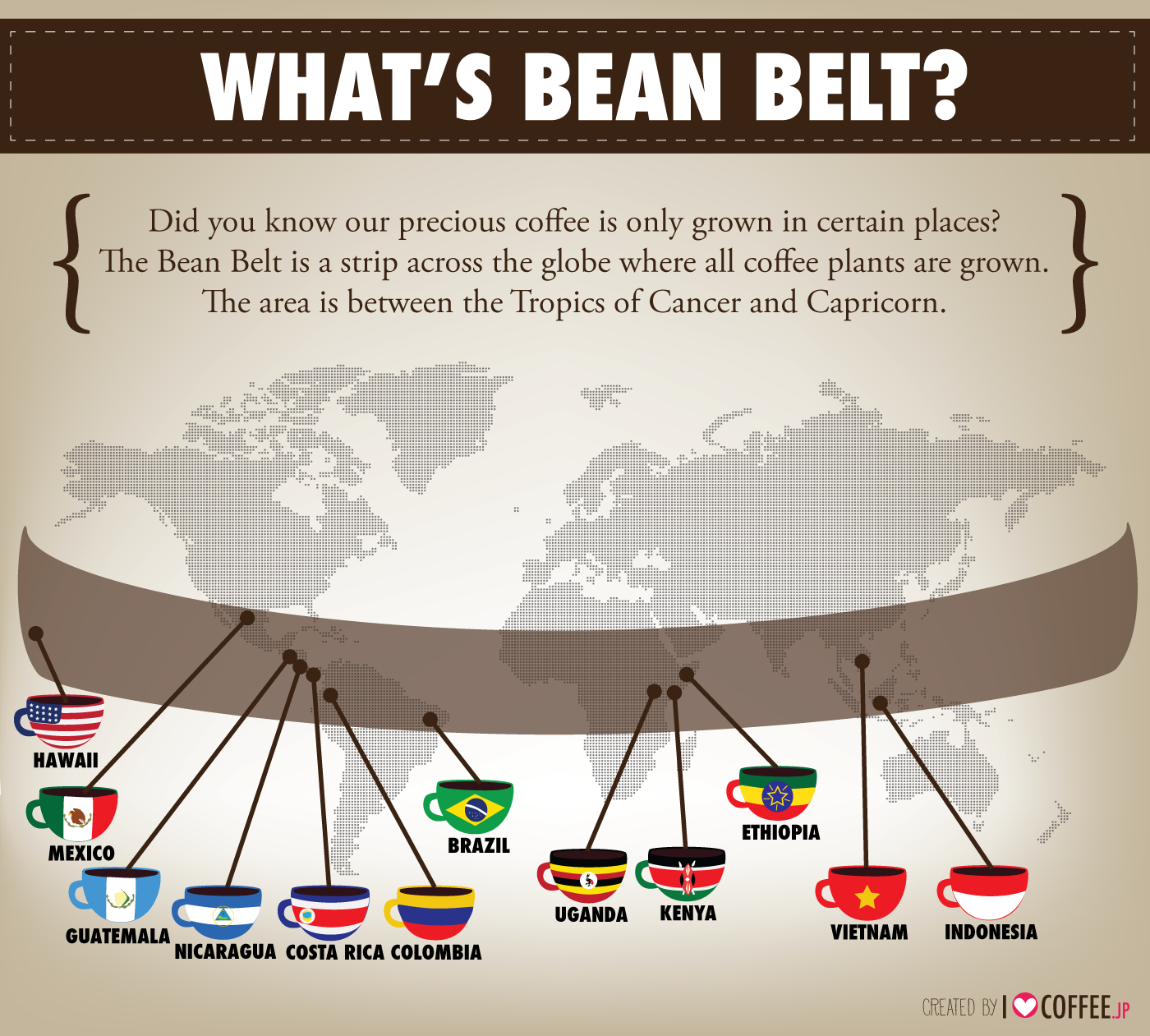Shifting global temperatures may change the key coffee growing areas

Countries that are close to the equator have always been renowned for producing the most delicious tasting coffee beans. However, with temperatures surging worldwide, zones and countries that are currently perfect for growing coffee may soon shift. Regions that are now the ‘crème de la crème’ of the coffee producing world which includes parts of Columbia, Costa Rica and Brazil may not be able to produce the coffee that they do now if they become ravaged by extremely hot temperatures and associated warm weather diseases.
Coffee plants are very fussy about where they want to grow! They typically grow best in the ‘Bean Belt’ – this includes places like Guatemala, Ethiopia and Indonesia as well as Columbia, Costa Rica and Brazil. They are all in vastly different zones but have one thing in common – they lie in a band of tropical regions along the equator. These areas typically experience high altitude and are made up from mountainous terrain. The days are warm and the nights are cold, which is perfect for the coffee plants to prosper.
But, with the global climate changing, coffee production is suffering. Plant-killing diseases like Roya that eat coffee plants thrive in warm weather, while at the same time the heat is also shrinking the arable land which is the best suited to grow coffee in. Land that is at a high-altitude with cool nights and warm days ‘shock’ natural chemicals into beans that provide that extra special taste when it hits your coffee cup!
As the warmer weather pushes beyond the usual destinations around the equator, the best coffee-growing climates will follow and expand further away from the ‘Bean Belt’. Although many of us will think this can only be a positive thing, it will mean that the ideal coffee growing areas which once had the ideal growing climate will eventually become too hot and may become fallow.
With these changes very possible, the coffee farmers who currently produce the more robust disease and weather resistant coffee variety of Robusta (compared to the delicate Arabica), will start to put more resources into producing delicious speciality coffees in regions such as Vietnam, India, parts of East Africa and Mexico. Currently, Columbia is experimenting with a varietal called Castillo instead of Caturra with some success already.
Don’t worry though; experts believe that coffee will be around for years and years to come and especially with the on-going development of new coffee hybrids, which are more resistant to warm weather and disease.










